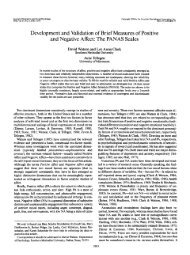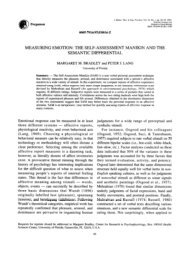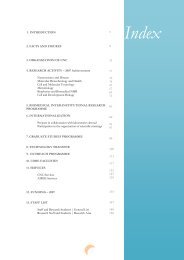Biology <strong>of</strong> Reproduction <strong>and</strong> Human Fertility | Head: João RamalhoObjectivesThe main goal consists in determining what makesa good sperm, from a cellular, biochemical <strong>and</strong>molecular st<strong>and</strong>points, with focus on themitochondria <strong>and</strong> bioenergetics as it relates to cellfunction <strong>and</strong> homeostasis. Several animal modelsare used (horse, rat, cat, human), <strong>for</strong> differentpurposes. The horse has been used to bothcharacterize native Portuguese breeds, <strong>and</strong> as atool to improve animal management (reproduction,semen banking, artificial insemination) incollaboration with the Agricultural School <strong>of</strong>Coimbra. Human work is carried out at theUniversity Hospitals <strong>of</strong> Coimbra where the groupis involved in quality control, gamete <strong>and</strong> embryoevaluations, gamete <strong>and</strong> tissue banking <strong>for</strong>oncology patients, <strong>and</strong> research aimed at directlyimproving the quality <strong>of</strong> service in the HumanReproduction Clinic. The rat has been used as amodel to characterize gametogenesis from abioenergetics st<strong>and</strong>point, <strong>and</strong> to assess the effect <strong>of</strong>diabetics on reproductive parameters. The cat isused as a model <strong>for</strong> endangered felids, in terms <strong>of</strong>preservation <strong>of</strong> the germline <strong>and</strong> xenotransplantation.We are currently researching changes in sperm thatmay correlate with fertility (abnormal mitochondrialDNA replication, mitochondrial function, apoptosis,sperm chromatin status, ATP production,antioxidant defenses), as well as the effect <strong>of</strong>diabetes <strong>and</strong> age on testicular homeostasis, spermproduction, metabolism <strong>and</strong> physiology. Thesestudies are being carried out both in bulkpopulations <strong>of</strong> sperm from males with differentsemen characteristics, as well as in populations thathave been sorted by either classical methods orflow cytometry, <strong>and</strong> have relevance <strong>for</strong> thediagnosis <strong>and</strong> management <strong>of</strong> human <strong>and</strong> horse(in)fertility. Another goal is to develop simple teststo monitor sperm quality in an ejaculate in terms <strong>of</strong>nuclear DNA status which can be applied both infield studies concerning the management <strong>of</strong>endangered species, <strong>and</strong> in the clinic. Furthermore,the group’s expertise has recently led tocollaborations regarding the effect <strong>of</strong> mitochondrialbioenergetics on human embryonic stem cellpluripotency, <strong>and</strong> differentiation.Main Achievements1‐ Detailed analysis <strong>of</strong> ATP production,mitochondrial function, membrane stability,apoptosis, oxidative stress <strong>and</strong> antioxidantdefenses in equine sperm, <strong>and</strong> impact on stallionfertility in order to determine the best possibleindicators <strong>for</strong> stallion fertility, with relevance <strong>for</strong>animal breeding <strong>and</strong> semen banking (part <strong>of</strong> thiswork has been published). Despite their economicimportance <strong>for</strong> decades this work also provided thefirst characterization <strong>of</strong> native breeds (Lusitano<strong>and</strong> Sorraia) in terms <strong>of</strong> breed‐specific semenparameters (published).2‐Simultaneous use <strong>of</strong> several fluorescence‐basedassays to monitor human sperm quality <strong>and</strong> providea more accurate diagnosis <strong>of</strong> patient sperm quality<strong>and</strong> male infertility (previously published).However, this work also clearly showed that routineclinical applications would have to be both cheaper<strong>and</strong> easier, which led to the development <strong>of</strong> a novelsimple assay to monitor human sperm DNA status,an important parameter that is not usuallyquantified. This assay was derived from previouswork carried out in the cat, <strong>and</strong> its usefulness inpredicting treatment outcomes has been validated ina multi‐center collaboration involving samples fromthe University Hospitals <strong>of</strong> Coimbra, two labsaffiliated with the University <strong>of</strong> Porto, <strong>and</strong> a lab inBrest (France). (This work is in press).3‐ Successful pro<strong>of</strong> <strong>of</strong> principle that primate spermretains reproductive potential after freeze‐drying(paper published <strong>and</strong> on journal cover).4‐ Characterization <strong>of</strong> testicular bioenergetics as distinct<strong>for</strong> that <strong>of</strong> other organs, <strong>and</strong> implication <strong>of</strong> testicularbioenergetics <strong>and</strong> uncoupling proteins in aging <strong>of</strong> themale reproductive tract (three papers in press)5‐ Discovery <strong>of</strong> a role <strong>for</strong> mitochondria inmaintaining human embryonic stem cellpluripotency. Mitochondrial inhibition usingantimycin A results in an up‐regulation <strong>of</strong>pluripotency markers such as Nanog, in stem cells,while maintaing essential cellular characteristics. Infact, antimycin A in culture media can actuallyreplace the role <strong>of</strong> some growth factors, namelybFGF (work submitted).80
Infection, Phagocytosis <strong>and</strong> Pathogens | Head: Maria Otilia VieiraObjectivesProject 1: Use <strong>of</strong> Surfactants in the Prevention <strong>of</strong> SexuallyTransmitted Infections <strong>and</strong> Unwanted PregnanciesWe aim at a comprehensive research program thatincludes the development <strong>and</strong> screening in vitro <strong>of</strong>surfactants that have potential <strong>for</strong> use as microbicidal<strong>and</strong> spermicidal agents. Initially, we shall design <strong>and</strong>test new surfactants with the intuition that they shouldinhibit membrane fusion. To the best <strong>of</strong> our knowledgethis rationale has not been used in the scientificliterature so far <strong>and</strong> has certainly not been consideredin all the (unsuccessful) Phase III trials that have beenconducted to date. We will test the effect <strong>of</strong> thesecompounds, in a systematic manner, on the growth <strong>of</strong>bacteria, fungi, <strong>and</strong> viruses that are clinically relevantpathogens in sexually transmitted infections, urinogenitaltract infections, <strong>and</strong> neonatal infections.Project 2: Identification <strong>of</strong> the molecular machineryinvolved in phagosomal maturationIdentification <strong>and</strong> elucidation <strong>of</strong> the function <strong>of</strong>host molecular determinants such as small Gproteins (Rab proteins) in the entry <strong>of</strong> two differentparticles: IgG‐opsonized inert particles <strong>and</strong>Mycobacterium tuberculosis.To identify host molecules that can affectmaturation <strong>of</strong> phagosomes containing IgGopsonizedparticles <strong>and</strong> Mycobacteriumtuberculosi using RNAi <strong>and</strong> confocal imaging.Project 3: Role <strong>and</strong> molecular mechanisms underlyingCD36‐mediated phagocytosis <strong>of</strong> apoptotic cells:implications <strong>for</strong> atherosclerosis.To obtain a better underst<strong>and</strong>ing <strong>of</strong> the molecularprocesses underlying phagocytosis <strong>of</strong> apoptotic cells bymacrophages <strong>and</strong> defective phagocytosis inatherosclerotic lesions. Initially, we want to study thecontribution <strong>of</strong> CD36 <strong>and</strong> PSR to phagocytosis,individually <strong>and</strong> in combination, <strong>and</strong> then thedownstream signaling events leading to engulfment <strong>of</strong>apoptotic cells. We hope to elucidate some <strong>of</strong> thefundamental principles involved in clearance <strong>of</strong>apoptotic cells.that were not toxic towards mammalian cells.However, neither this class <strong>of</strong> surfactants, norcommercially available surfactants <strong>of</strong> the non‐ionic,zwitterionic, or anionic families were found to bespermicidal or anti‐viral at concentrations that weresub‐toxic to mammalian epithelia. Conversely, thenewly synthesized surfactants were able to preventviral infection <strong>of</strong> non‐encapsulated virus. Thesepromising compounds are at the moment being tested<strong>for</strong> bactericidal <strong>and</strong> fungicidal properties.Project 2: We showed that Rab10 association withphagosomes is transient <strong>and</strong> live microscopy revealeddetectible levels <strong>of</strong> Rab10 on phagosomal membranesat very early time points. The recruitment <strong>of</strong> Rab10 hadstrong functional consequence, as the depletion <strong>of</strong>Rab10 by RNAi or overexpression <strong>of</strong> Rab10 dominantnegative mutants delayed maturation <strong>of</strong> phagosomes<strong>of</strong> IgG opsonized latex beads or dead mycobacteria. Ofnote, overexpression <strong>of</strong> the constitutively active mutantRab10 rescued, at least partially, live Mycobacteriumcontaining phagosomes’ maturation. Altogether theseresults indicate that Rab10 plays a prominent role inphagolysosome <strong>for</strong>mation <strong>and</strong> can modulateMycobacterium containing phagosomes’ maturation.Project 3: We started this project by assessing the effect<strong>of</strong> LDL charge, resulting mainly from products fromtheir lipid oxidation, in the internalization <strong>of</strong> theseparticles by macrophages. For this purpose, wesuccessful generate LDL in which only the lipidicfraction is negatively charged by the incorporation <strong>of</strong>cholesteryl hemi‐ester (a molecule that mimics one <strong>of</strong>main oxidation products <strong>of</strong> LDL). We found that weneed at least the incorporation <strong>of</strong> around 600 molecules<strong>of</strong> negatively charged cholesteryl ester per LDL particleto have foam cell <strong>for</strong>mation, an early event in theatherogenesis. These negatively charged particles arealso able to induce massive apoptosis. Furthermore,when we follow their internalization we found that ourLDL model is internalized faster than native but atslower rates than acetylated LDL.81Main AchievementsProject 1: Commercially available quaternaryammonium surfactants were shown to exhibitbactericidal <strong>and</strong> fungicidal properties at concentrationsFig.1. Distribution <strong>of</strong> Rab10 <strong>and</strong> Rab5 during phagocytosis <strong>and</strong> thefunctional relevance <strong>of</strong> Rab10 in phagolysosome <strong>for</strong>mation
- Page 7 and 8:
General ObjectivesThe CNC major mis
- Page 11 and 12:
OrganizationThe Center for Neurosci
- Page 13:
Microbiology | Milton CostaMicrobio
- Page 16 and 17:
per year) will be proposed by the g
- Page 18 and 19:
Neuroprotection and Neurogenesis in
- Page 20 and 21:
Retinal Dysfunction and Neurogenesi
- Page 22 and 23:
Glutamatergic synapses | Head: Ana
- Page 24 and 25:
Neuronal Cell Death and Neuroprotec
- Page 26 and 27:
Molecular Mechanisms of Disease | H
- Page 28 and 29:
PublicationsAgasse F, Bernardino L,
- Page 30 and 31: Santiago AR, Carvalho, CM, Carvalho
- Page 32 and 33: “Nano‐transportadores de base l
- Page 34 and 35: Vectors and Gene Therapy GroupM. Co
- Page 36 and 37: Molecular Systems Biology | Head: A
- Page 38 and 39: Vectors and Gene Therapy | Head: Ma
- Page 40 and 41: PublicationsAlves S, Nascimento‐F
- Page 43 and 44: Area C | Cell and Molecular Toxicol
- Page 45 and 46: Mitochondrial Toxicology and Pharma
- Page 47: Pharmacometrics GroupAmílcar Falc
- Page 50 and 51: Free Radicals and Antioxidants in B
- Page 52 and 53: Pharmacometrics | Head: Amílcar Fa
- Page 54 and 55: Correia S, Carvalho C, Santos MS, P
- Page 57 and 58: Area D | MicrobiologyCoordinator |
- Page 59: Microbiology of Extreme Environment
- Page 62 and 63: Medical Mycology - Yeast Research |
- Page 65 and 66: Area E | Biophysics and Biomedical
- Page 67 and 68: Inorganic Biochemistry and Molecula
- Page 69 and 70: Inorganic Biochemistry and Molecula
- Page 71 and 72: Cell Biophysics |Head: Luís Martin
- Page 73: Sobral AJFN, Justino LLG, Santos AC
- Page 76 and 77: Future PlansThere is an enormous we
- Page 78 and 79: Paula MotaSara M. Diniz Martins Lop
- Page 82 and 83: Insulin Resistance and Adipocyte |
- Page 85 and 86: Biomedical Inter‐Institutional Re
- Page 87 and 88: 3. Pediatric Research: metabolic di
- Page 89 and 90: PublicationsSantos MJ, Cleto S, Men
- Page 91: 7. Research in brain cancer: geneti
- Page 94 and 95: Grafting SVZ neural stem cell cultu
- Page 96 and 97: Structure‐function analysis of th
- Page 98 and 99: Anticancer Effects of of Phytochemi
- Page 100 and 101: Investigaciones Biomédicas “Albe
- Page 102 and 103: Participation in the organization o
- Page 104 and 105: May 2008Member of the organizing co
- Page 106 and 107: 106
- Page 108 and 109: Genome BiologyFebruary 25 ‐ 27Isa
- Page 110 and 111: Seminars2008 Series | CNC Audithori
- Page 112 and 113: 13.6.2008Cells caught in the act: M
- Page 114 and 115: 5.12.2008Unexpected fate and functi
- Page 116 and 117: Elisabete Ferreiro“Cross‐talk b
- Page 118 and 119: Ana Isabel Vicente Rafael“Estudos
- Page 120 and 121: Rosete Pais“Papilomavirus humano
- Page 122 and 123: 122
- Page 124 and 125: 124
- Page 126 and 127: FLOW CYTOMETRY UNITHead of Unit: Is
- Page 128 and 129: MASS SPECTROMETRY UNITHead of Unit:
- Page 130 and 131:
130
- Page 132 and 133:
Amino Acid AnalysisOur laboratory r
- Page 134 and 135:
2. Areas of Expertise / Research /
- Page 136 and 137:
Multiple SclerosisAn extension of t
- Page 138 and 139:
2.2. Centre for Bioavailability Stu
- Page 140 and 141:
StaffCoordinatorTice Macedo, MD, Ph
- Page 142 and 143:
142
- Page 144 and 145:
Compatible solutes from extremophil
- Page 146 and 147:
Proteases aspárticas secretadas em
- Page 148 and 149:
Mecanismos de plasticidade sinápti
- Page 150 and 151:
Clivagem dos transportadores vesicu
- Page 152 and 153:
ʺBIOINK ‐ Aprendizagem increment
- Page 154 and 155:
154
- Page 156 and 157:
Henrique Faneca (Auxiliar Inv., CNC
- Page 158 and 159:
Liliana Bernardino 100Luis Miguel E
- Page 160 and 161:
João Teixeira 100João Teodoro 100
- Page 162 and 163:
Patricia Henriques Domingues 100Pat
- Page 164 and 165:
ADMINISTRATIVE STAFFTime % at CNCAr
- Page 166 and 167:
Sandra Isabel M. Cardoso (Auxiliar
- Page 168 and 169:
Molecular Biotechnology and HealthE
- Page 170 and 171:
Cell and Molecular ToxicologyLeonor
- Page 172 and 173:
MicrobiologyMilton Costa, PhD, Coor
- Page 174 and 175:
Paulo Gameiro Guerreiro 100Pedro Co
- Page 176 and 177:
Marta Isabel Rodrigues Baptista 100
- Page 178:
Url: http://www.cnbc.pt | Email: in






